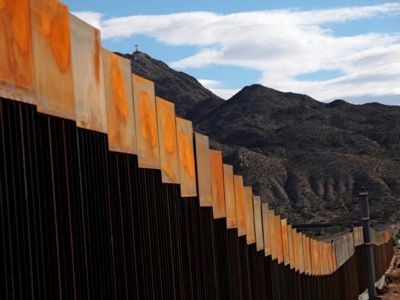Extending
the Wall separating the United States and Mexico: the Western press
condemns it, leaving no ground for appeal. Manlio Dinucci on the other
hand, recalls that far from resulting from a desire to protect and
[erect barriers], it is the product of a policy to globalize [and
dismantle barriers]. This construction is a bi-partisan project,
initiated by Bill Clinton, followed up by George Bush Jr and then by
Barack Obama. Dinucci observes that it is NAFTA not the Wall that is
responsible for the devastating effects that have rippled through
Mexican society. NAFTA was conceived as a bridge between the three
signatory states. It is a treaty which strives to broaden the normal
process of delocalization yet carries the risk of poverty spreading
[like an Albertan wildfire] in Mexico and then the United States.
| Rome (Italy)
It is 29 September 2006, and the US Senate is voting
on the bill “Secure Fence Act” introduced by the republic
administration of George W Bush. The [bill] provides for the building of
1,100 km of “physical fencing”, at the Mexican border, which will be
heavily guarded to prevent the “illegal entry” of Mexican workers. Of
the two Democratic senators representing Illinois, one, Richard Durbin,
votes “No”; while the other one votes “Yes”. And the name of the other
one? [No other than] Barack Obama who two years later will be elected
President of the United States. Among the 26 democrats that are vote
“Yes”, thus enabling the bill to be passed as a law, the name of Hillary
Clinton, the Senator of New York State jumps out. Two years later she
will become the Secretary of State in the Obama Administration.
By 2006 Hillary Clinton is already well versed in anti-immigrant fencing, for she promoted these as First Lady. Indeed, it was Bill Clinton, a Democratic president that got construction underway in 1994. This is the precise time that NAFTA, the North American “Free” Trade agreement between United States, Canada and Mexico enters into force. An agreement that opens the doors to free movement of capital and capitalists, yet at the same time bars Mexican workers from entering the United States and Canada.
NAFTA is rippling devastation in Mexico: Mexico’s market is swamped with US and Canadian goods, the production of which is subsidized by the state, enabling them to be sold at low prices. This has caused agricultural production to collapse with devastating social effects for the rural population. This enables the formation of a pool of cheap labour, whose members are recruited by factories (maquiladoras): thousands of industrial plants along the border of the Mexican territory are owned and controlled largely by US companies. [Such companies], exploiting the tax loopholes, export to Mexico semi-finished goods or components to be assembled. The finished products are then imported back into the United States. Windfall profits are being made from these operations due to Mexican labour being very cheap and other [investment] incentives.
A substantial chunk of the factories’ workforce are girls and young women. The shifts are punishing to the extent of exhaustion, the harmful effects very high, the salaries very low and trade union rights virtually non-existent. Widespread poverty, drug trafficking, prostitution and uncontained criminality: all of this makes life in these areas extremely degrading. Just recall Ciudad Juárez, at the border with Texas, which, rather sadly, became famous for the countless homicides of young women, most of which are factory workers.
This is the reality behind the wall: initiated by Clinton the Democrat, followed up by Bush the Republican and reinforced by Obama the Democrat. The same one that Trump the Republican wants to complete along the entire 3000 km border. This explains why so many Mexicans are risking their lives (thousands have [already] died) to enter the United States. For here they can earn more, working illegally, squeezed by other exploiters. Crossing the border is like going to war, fleeing helicopters and drones, the barbed fencing, the armed patrols (many comprised of veterans of the wars in Iraq and Afghanistan), that are trained by soldiers in the techniques used in the theatres of war. Symbolic is the fact that, when constructing some sections of the fencing with Mexico in the nineties, the administration of Clinton the Democrat used the metallic platforms of the runways from which the planes used to bomb Iraq in the First Gulf War took off. [This war] was a product of the administration of George H.W. Bush, the Republican. Using materials from the subsequent wars, can we complete a bipartisan wall? Yes we can.

No comments:
Post a Comment